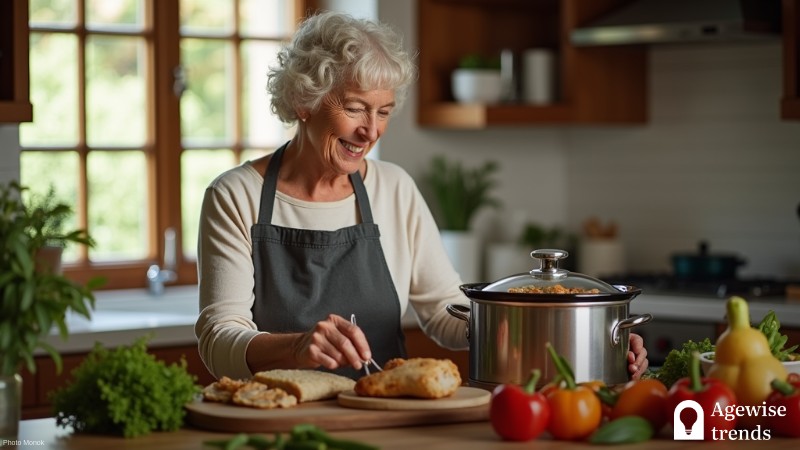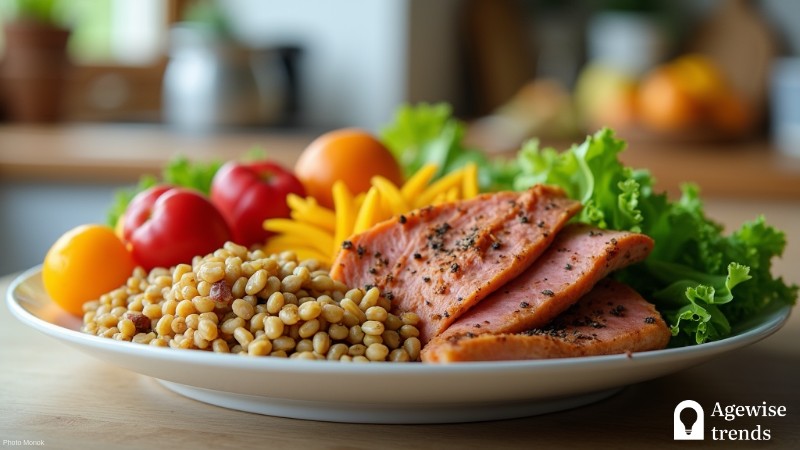Cooking can become more difficult as people age because of a decline in energy or movement. However, cooking tasty and nourishing food doesn’t have to be difficult. Using a slow cooker, a dependable kitchen tool that provides convenience and ease, is one of the greatest methods to make meal preparation easier for seniors.
By enabling hands-free cooking, slow cookers provide tasty, tender meals without requiring continual observation. They are a great option for elderly people who want to keep their independence in the kitchen because they also reduce cleanup. Caretakers and family members can guarantee that a senior receives home-cooked, well-balanced meals with little effort by including slow-cooked dishes in their diet.
Key Takeaways
Slow cooking is an excellent method for making meal preparation easier and more convenient for seniors, allowing them to maintain their independence in the kitchen.
- Slow cookers enable hands-free cooking, reducing cleanup and effort required for meal preparation.
- They allow for easy creation of softer, easier-to-chew foods that are high in nutrients and suitable for individuals with swallowing difficulties or dental problems.
- Preparation ahead of time, such as pre-cutting veggies and portioning proteins, can significantly reduce labor and preparation time.
Making meal preparation for seniors easier
Meal preparation for senior citizens should be easy and nourishing. By enabling all ingredients to be added to the pot simultaneously, slow cookers offer a practical solution by eliminating the need for numerous cooking stages. Instead of standing over a hot burner, which may be physically taxing, this one-step method not only saves time.
The ability to create softer, easier-to-chew foods is another benefit of slow cooking, which is particularly advantageous for people who have swallowing difficulties or dental problems. Foods that are easy on the teeth and high in nutrients include lentil soup, chicken and rice casserole, and robust beef stew.
Furthermore, seniors who have certain dietary requirements, such as low-sodium or gluten-free diets, can have their slow-cooked meals tailored with the right components. Checking food labels for gluten and sodium content is crucial to ensuring meals align with dietary restrictions.
Tips for preparing meals ahead of time
Cooking can be made considerably easier with advance planning, especially for elderly people or those who care for them. Pre-cutting veggies, portioning proteins, and measuring seasonings are some of the finest ways to prepare meals ahead of time. This minimizes labor and cuts down on preparation time by guaranteeing that everything is ready to go when it’s time to cook.
Another good tactic is batch cooking. Meals like soups, stews, and casseroles can be easily stored and reheated throughout the week when prepared in larger volumes. For easy and wholesome meals later, leftovers can be portioned out and frozen or kept in the refrigerator. Always reheat food to a safe internal temperature before serving, and allow it to cool completely before putting it in the refrigerator. Checking ingredient labels when purchasing pre-packaged seasonings or sauces helps ensure they meet dietary restrictions.
Ensuring safe and healthy slow-cooked meals
When using a slow cooker, food safety is crucial, especially for elderly people who may be more susceptible to foodborne infections. To guarantee that frozen meats quickly reach safe temperatures, always defrost them before cooking. Undercooking can also be avoided by checking the internal temperature of meats and poultry with a food thermometer. For comparison, poultry should be cooked to 165 degrees Fahrenheit, ground meat should be cooked to 160 degrees, and meat roasts should be cooked to 145 to 160 degrees.
Avoiding lifting the lid too frequently during cooking is another crucial piece of advice, since this can cause the temperature to drop and the cooking time to increase. For best results, let the slow cooker run without interruption. In conclusion, although slow cookers are excellent for preparing food, they should never be used to reheat food. Instead, reheat meals on the stovetop or in the microwave, then transfer them to the slow cooker to keep them warm at 140 degrees Fahrenheit or higher.
By following these meal preparation tips, seniors can enjoy home-cooked dishes with ease while maintaining a nutritious diet.














